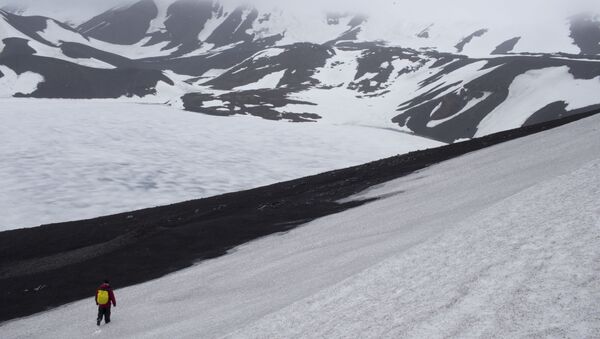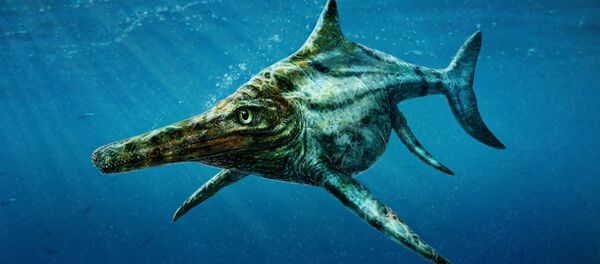Kaikaifilu's huge head was found in the final days of an expedition to Seymour Island the Antarctic in early 2011. The Chilean paleontologists had been hit by bad weather throughout the trip, and on the day of the discovery had been hiking through knee-deep mud, the scientists wrote in a University of Chile press release. But the last day's slog was worth it: they found a four-foot skull belonging to a creature that must have measured 33 feet long in rocks that were more than 66 million years old.
Kaikaifilu, named for an ancient sea beast from the Mapuche culture of southern Chile and Argentina, is actually not a dinosaur. It's a type of mosasaur, a relative of today's modern lizards. Kaikaifilu is only the second type of mosasaur ever discovered in Antarctica. The scientists point out that the harsh conditions of Antarctica make research there difficult – but for precisely that reason, the region still holds many undiscovered treasures.
Before Kaikaifilu was discovered, the teeth that were frequently found in Antarctica’s Late Cretaceous rocks were usually judged to be from Northern Hemisphere mosasaur species.
— Prensa Antártica (@prensaantartica) November 13, 2016
"Remarkably, the jaws of Kaikaifilu now reveal that many of these teeth co-existed as different tooth types in the mouth of this species, a condition known as heterodonty. Therefore, in all probability, the diversity of Antarctic mosasaurs has been overestimated," the University of Chile statement explains. It's more likely that all those teeth came from Kaikaifilu.
Mosasaurs are much more common in the Northern Hemisphere, Live Science points out. Kaikaifilu is a relative of North America’s terrifying Tylosaurus, though the that creature, which could grow up to 46 feet long, lived 20 million years later, the researchers said. It is also related to the only other known mosasaur from Antarctica, Taniwhasaurus antarcticus, who was much smaller than both.
— manasataramgini (@blog_supplement) November 9, 2016
"Prior to this research, the known mosasaur remains from Antarctica provided no evidence for the presence of very large predators like Kaikaifilu, in an environment where plesiosaurs were especially abundant," the University of Chile statement explains. "The new find complements one expected ecological element of the Antarctic ecosystem during the latest Cretaceous."
During the Cretaceous Period when Kaikaifilu lived, the Antarctic sea was much warmer and full of animals for the swimming lizard to eat. The huge sea predator, probably the biggest in the sea, sliced through its dark waters using its broad, paddle-like limbs and long tail, paleontologists believe. Kaikaifilu lived shortly before the dinosaurs went extinct, a period of time in which temperatures and sea levels changed dramatically.
Paleontologists Rodrigo Otero, Sergio Soto Acuña, David Rubilar Rogers and Carolina Simon Gutstein published the results of their study in Cretaceous Research in early November.




